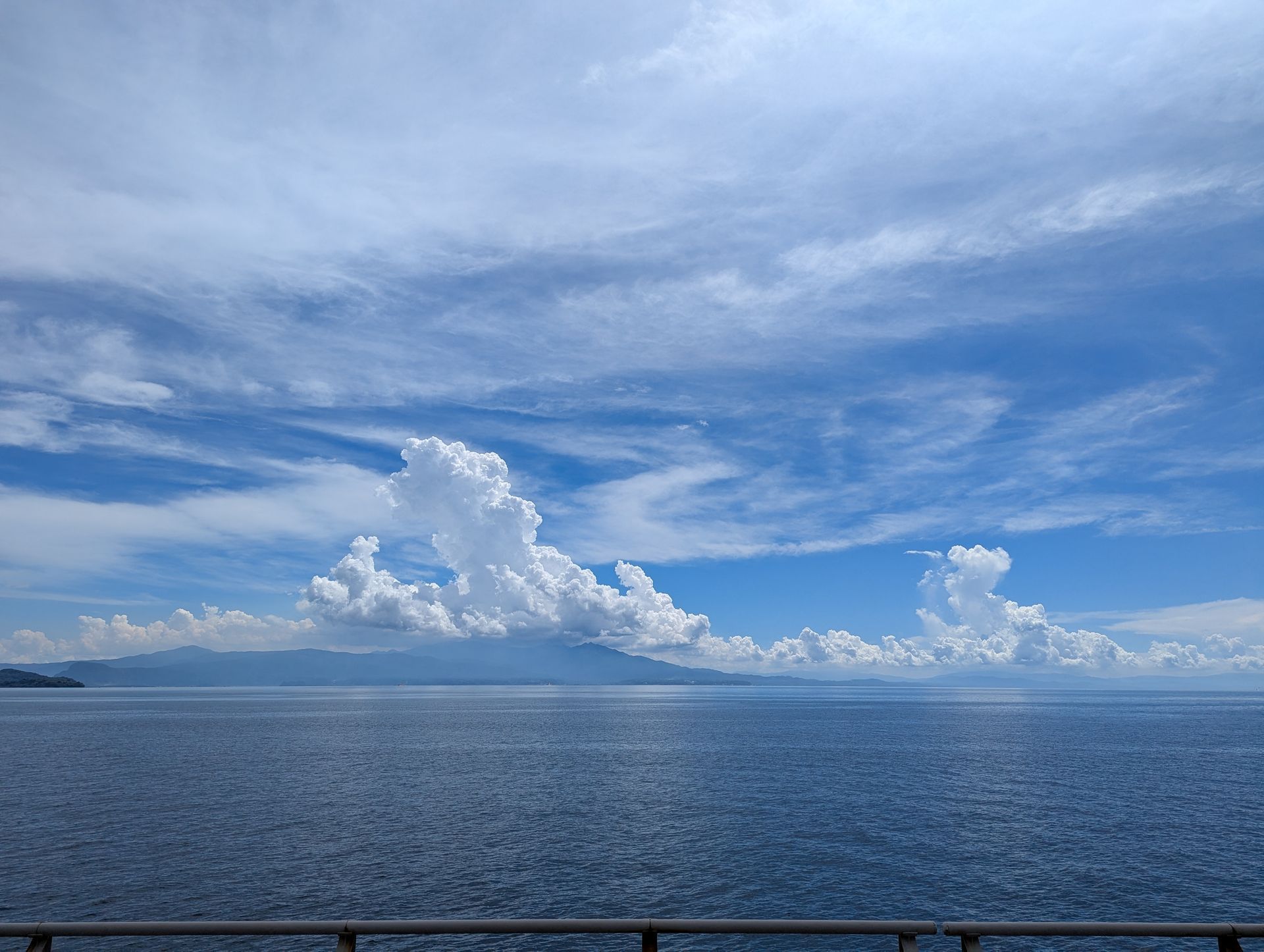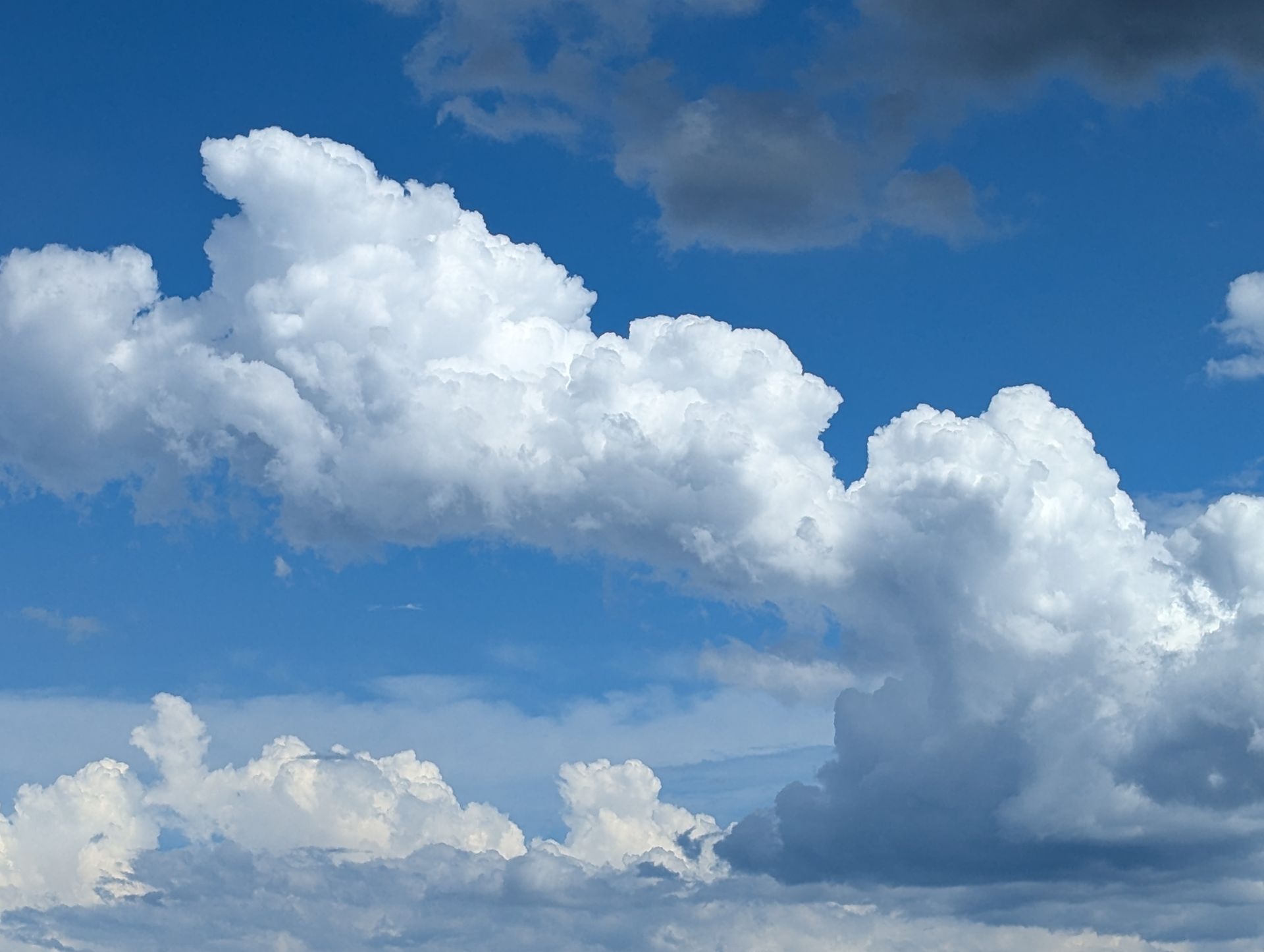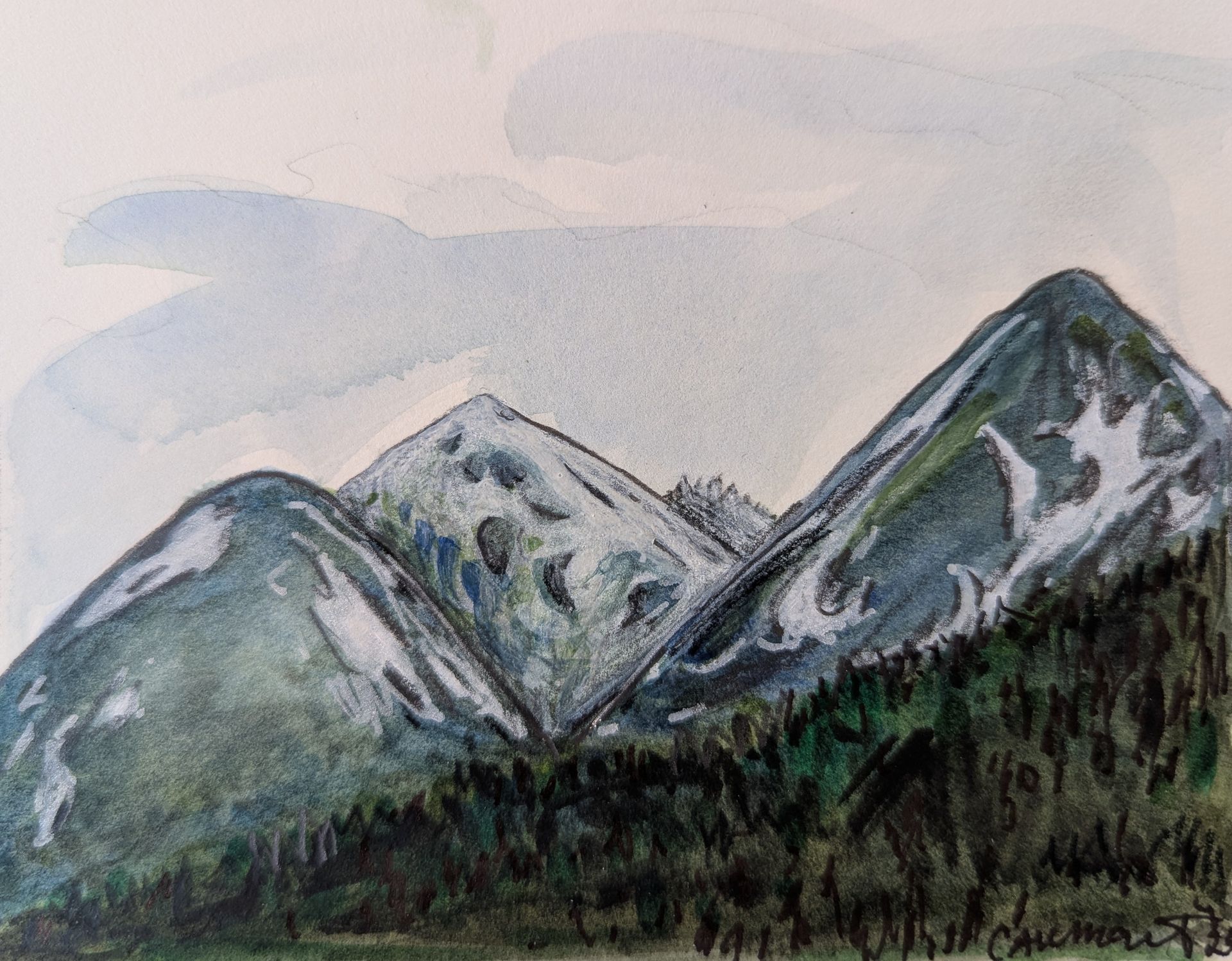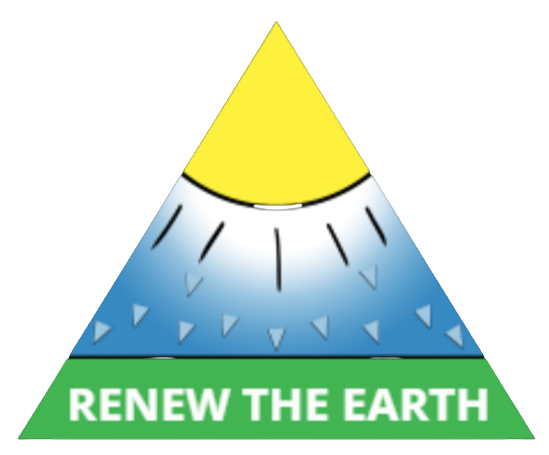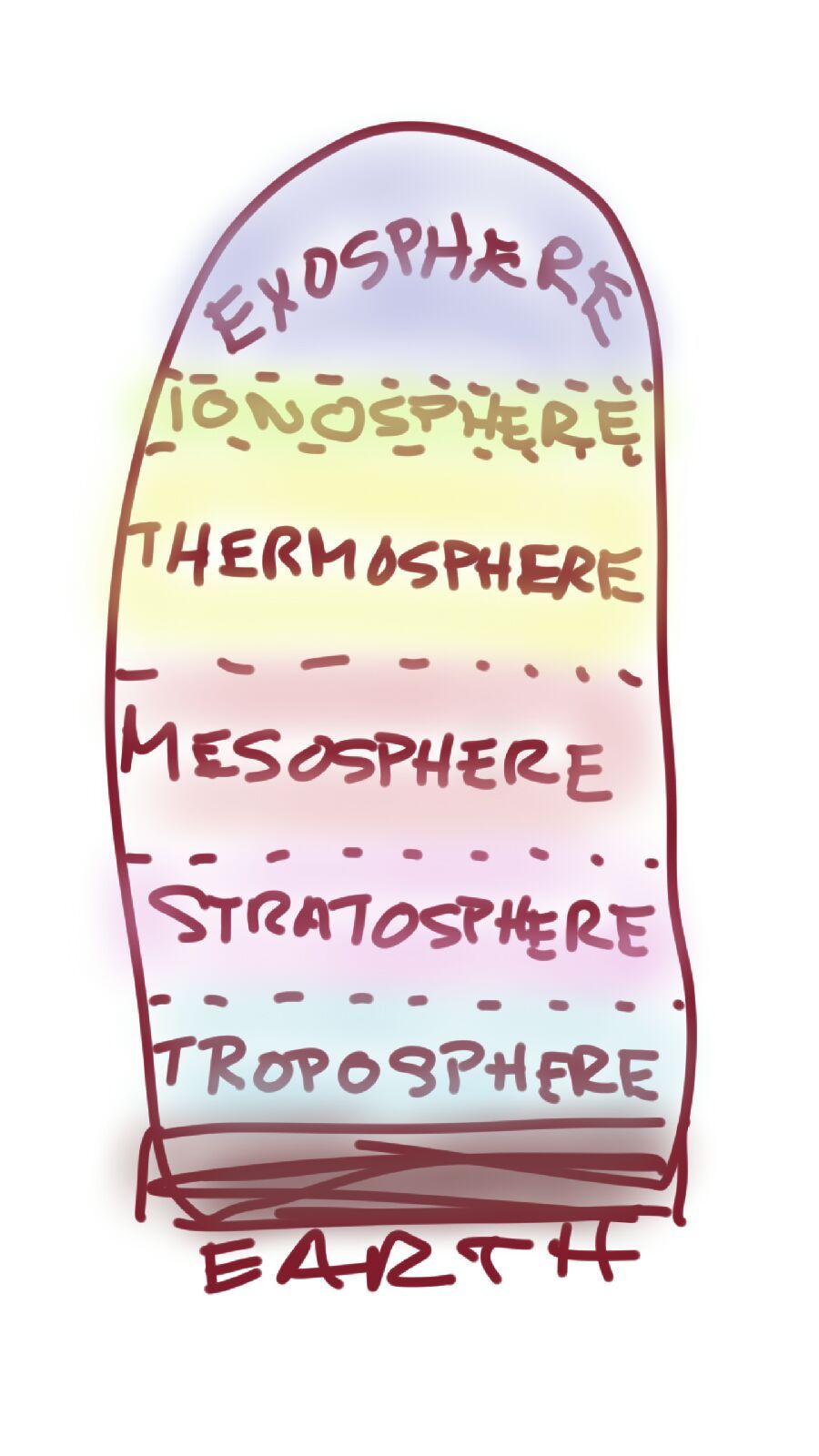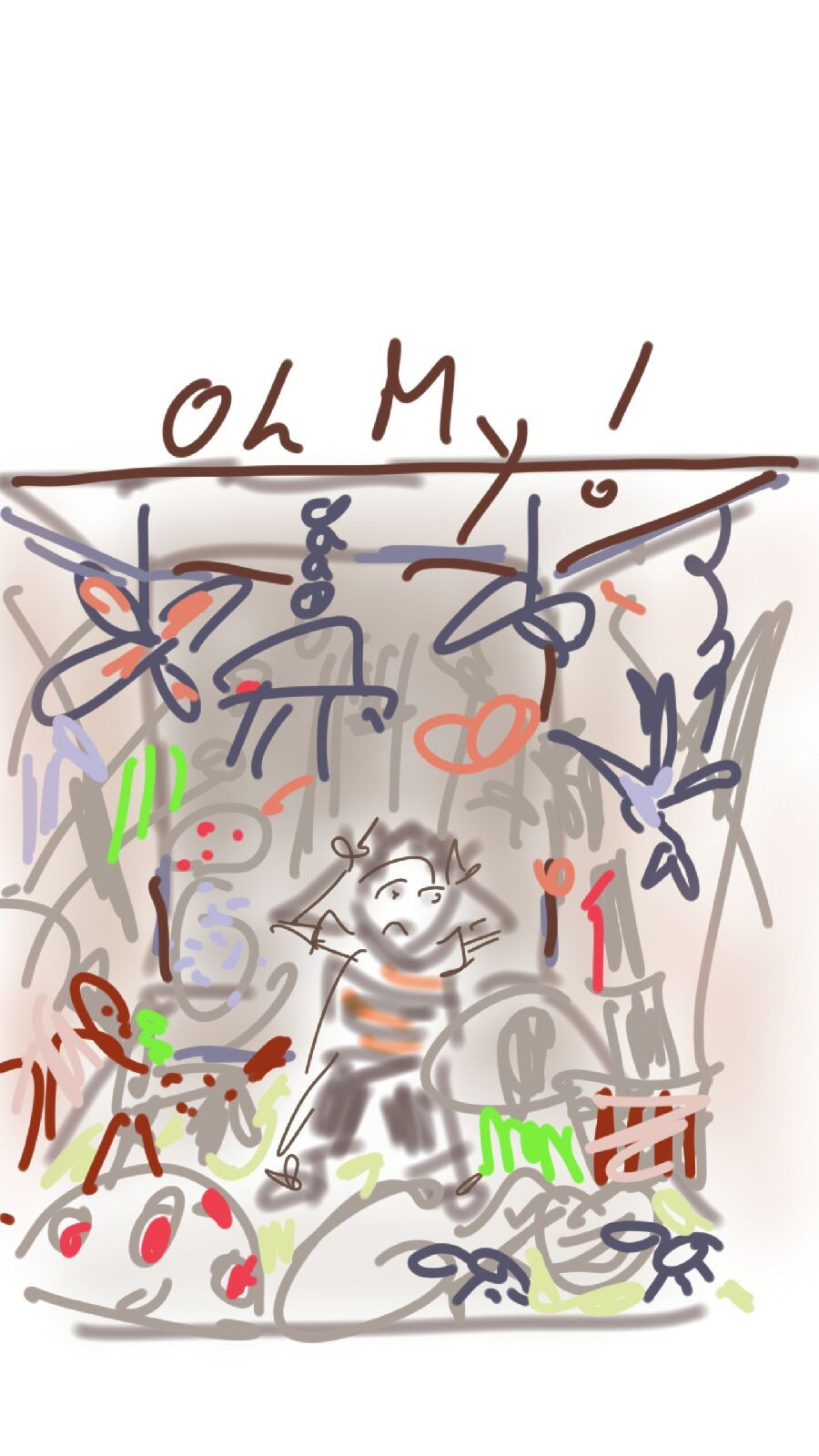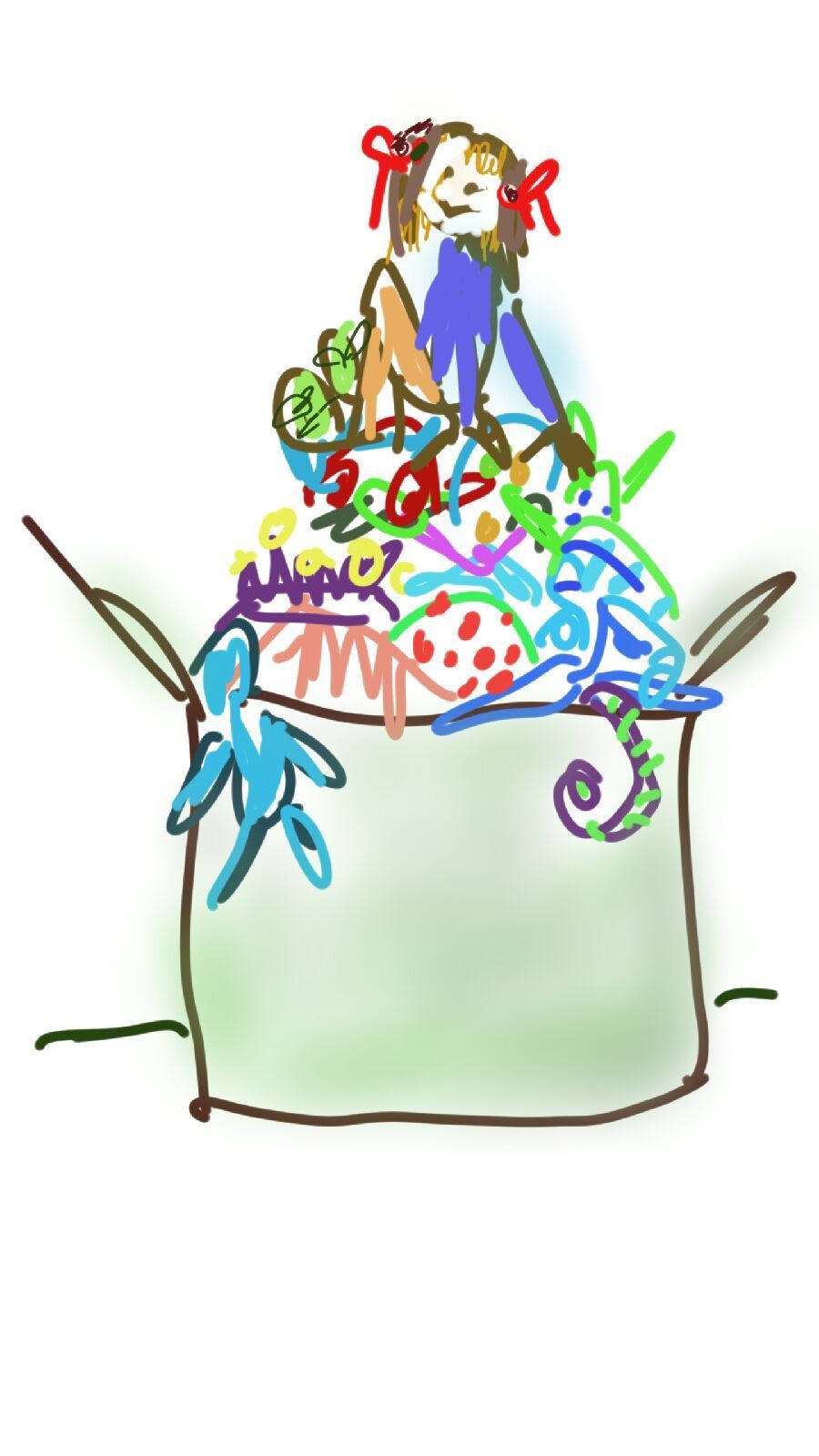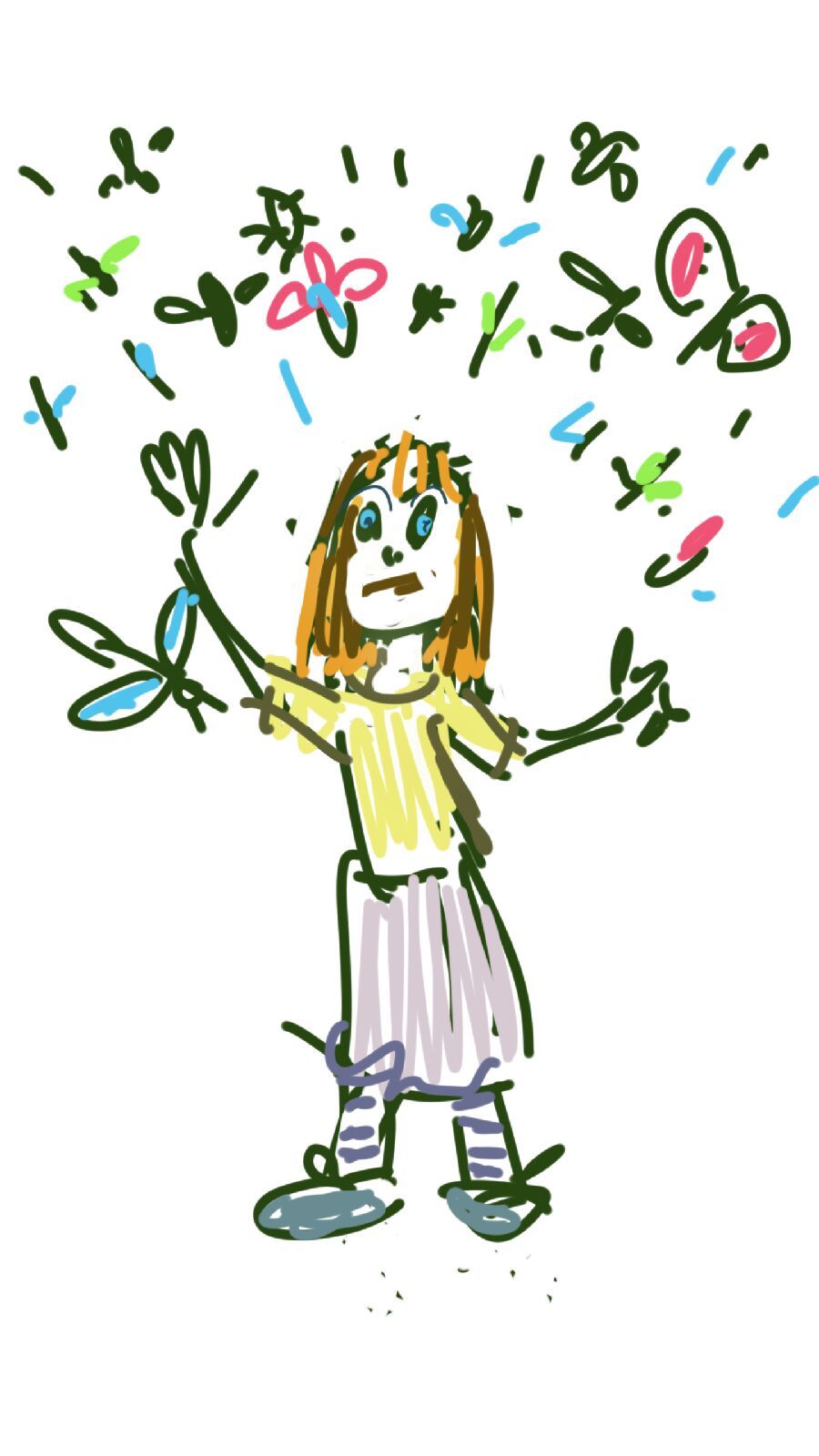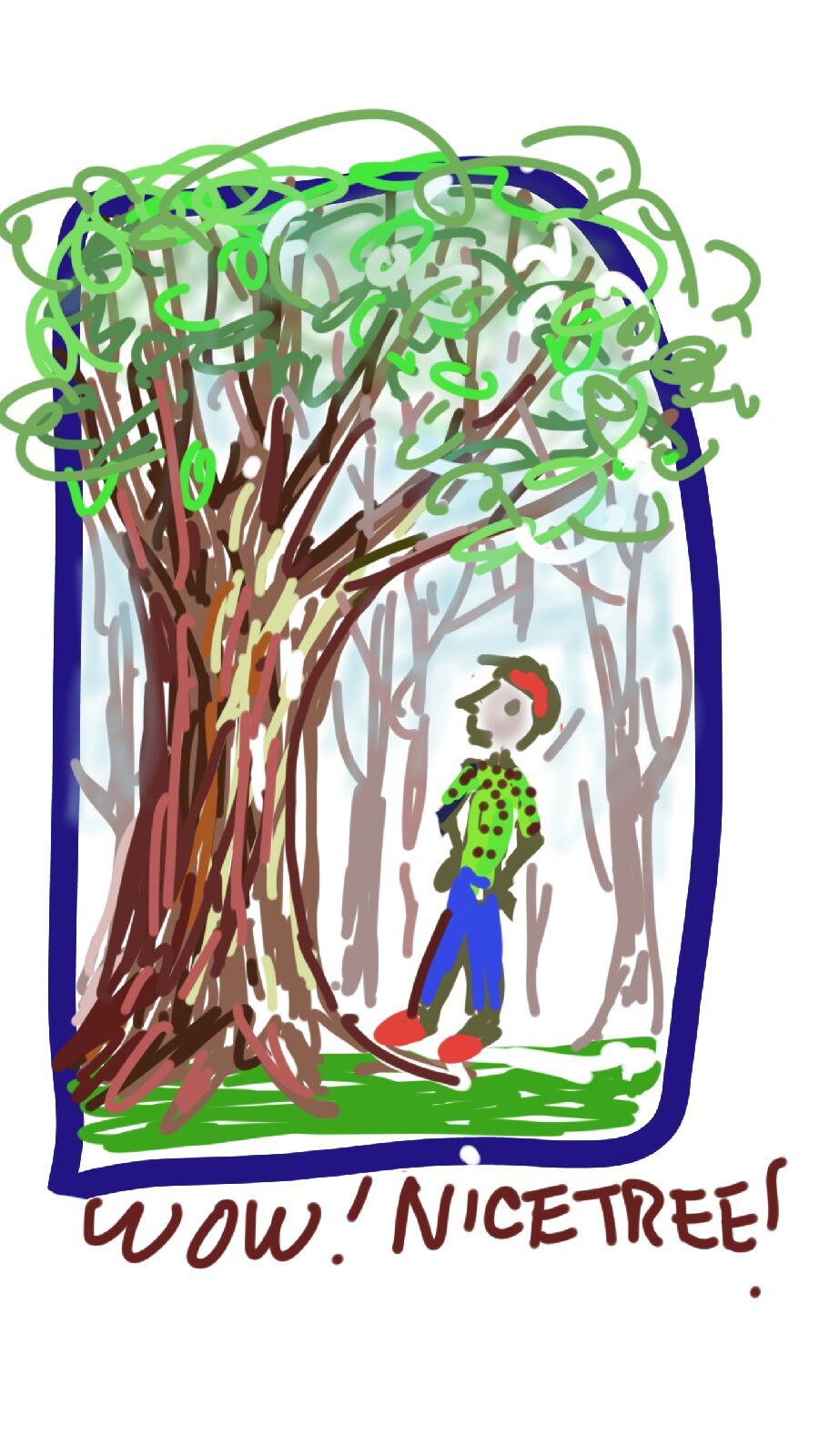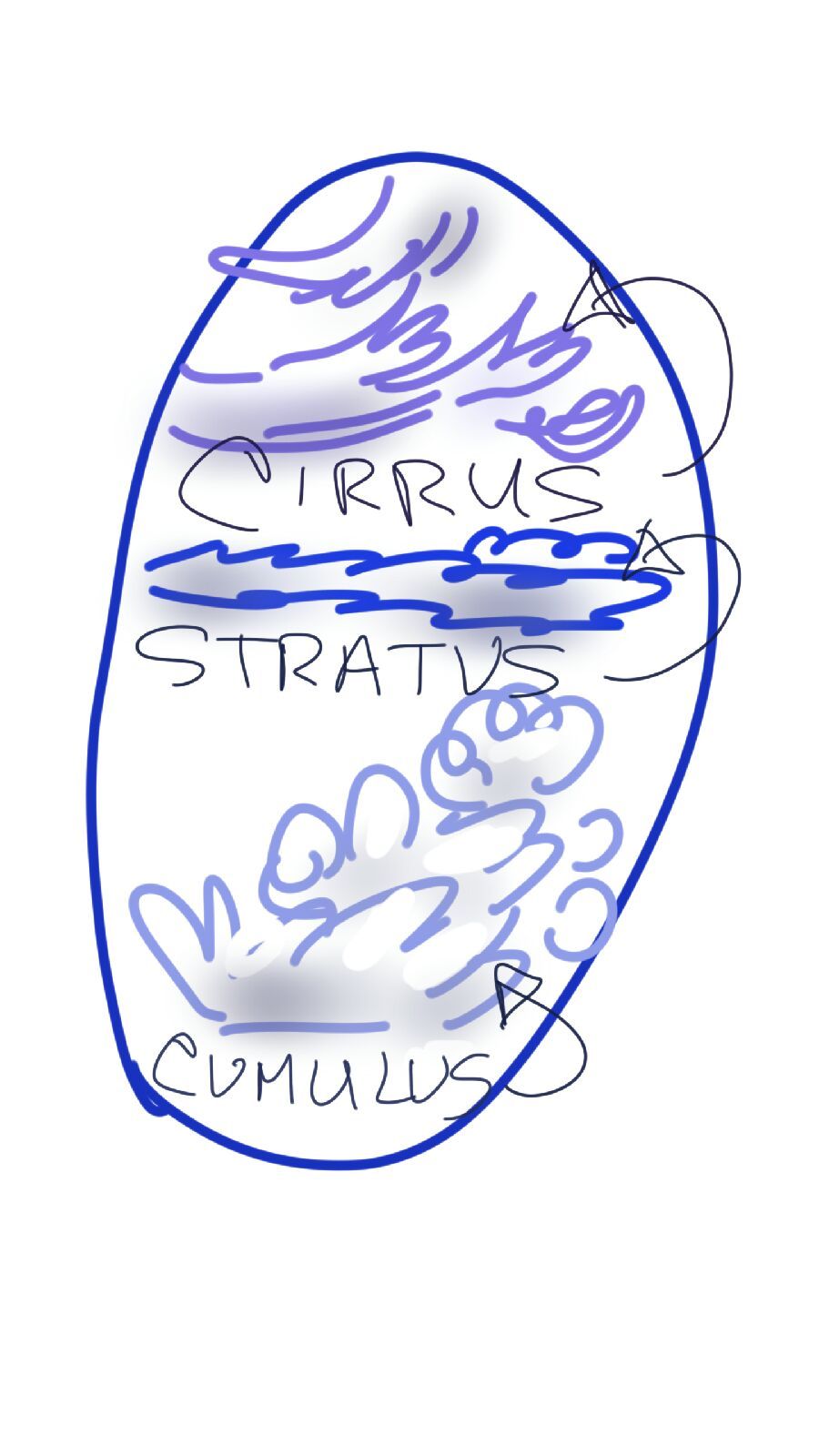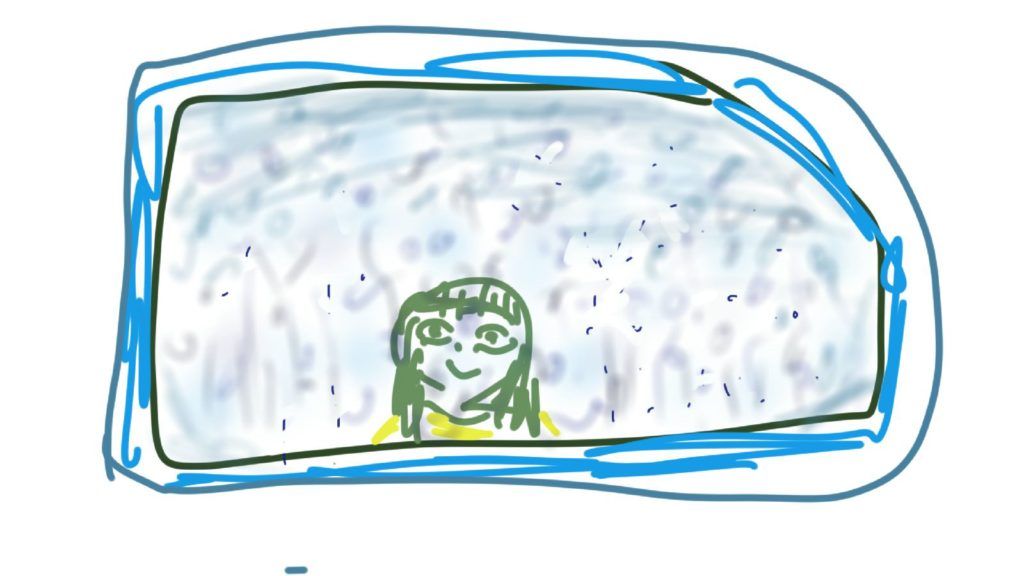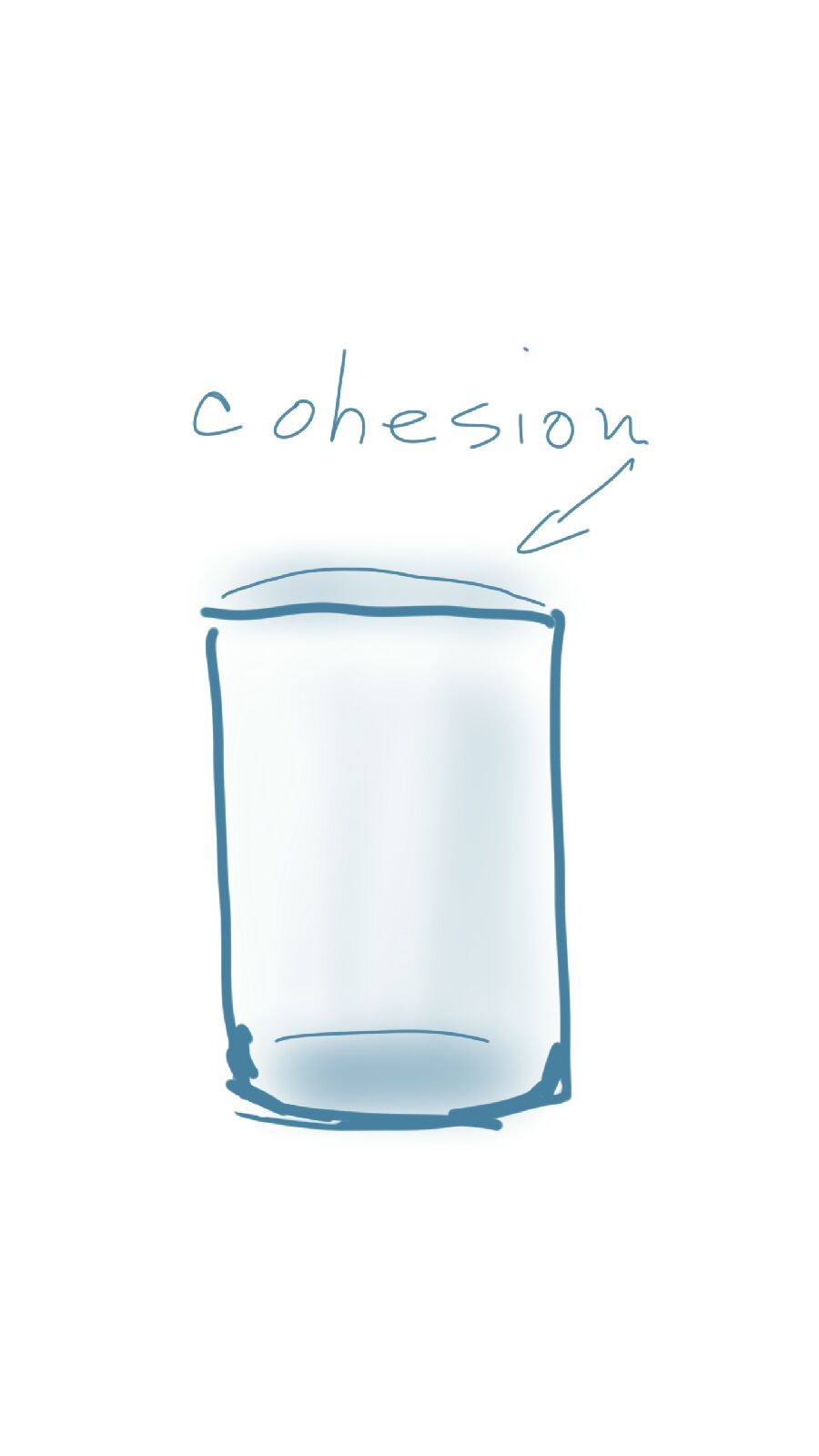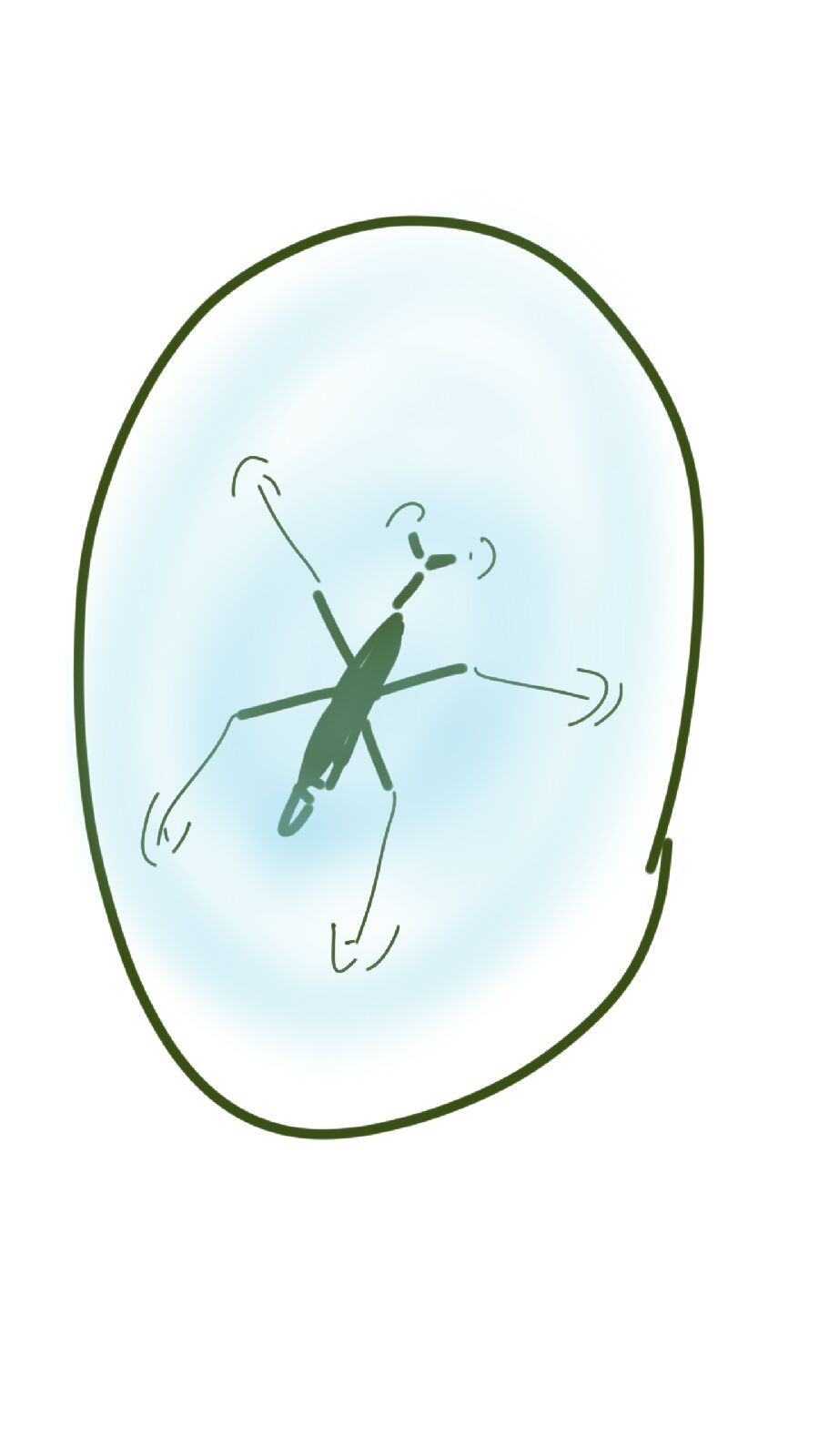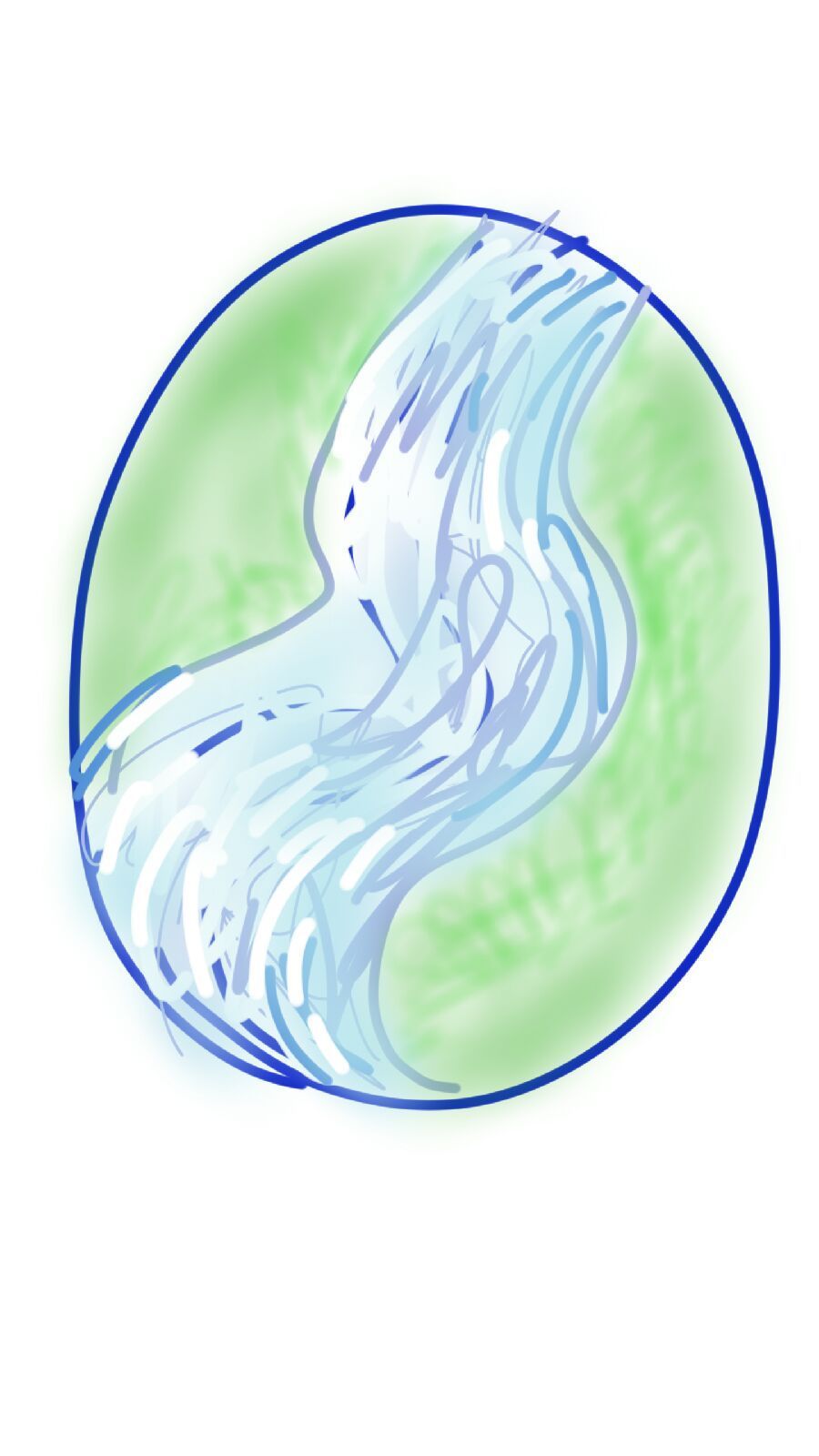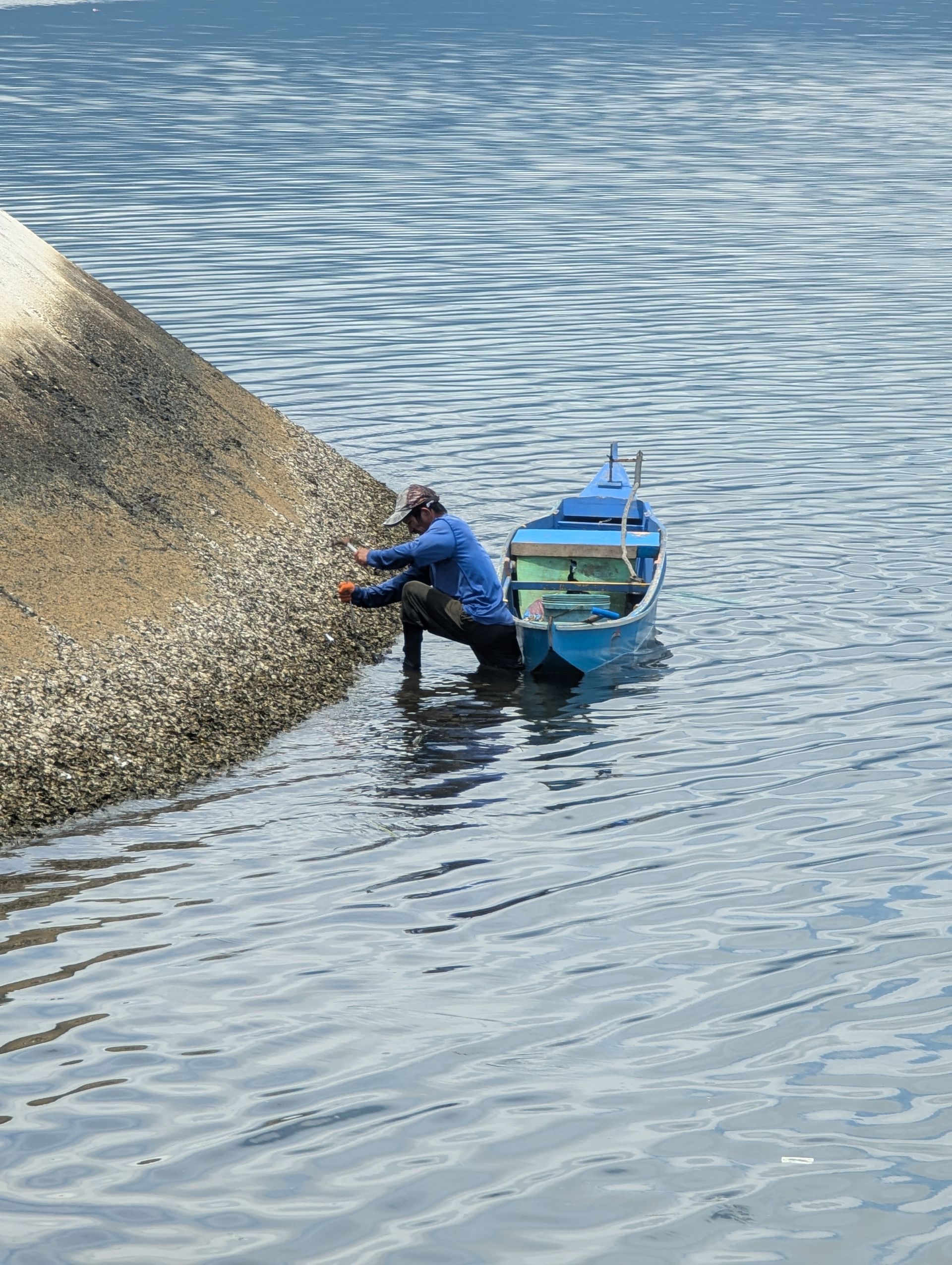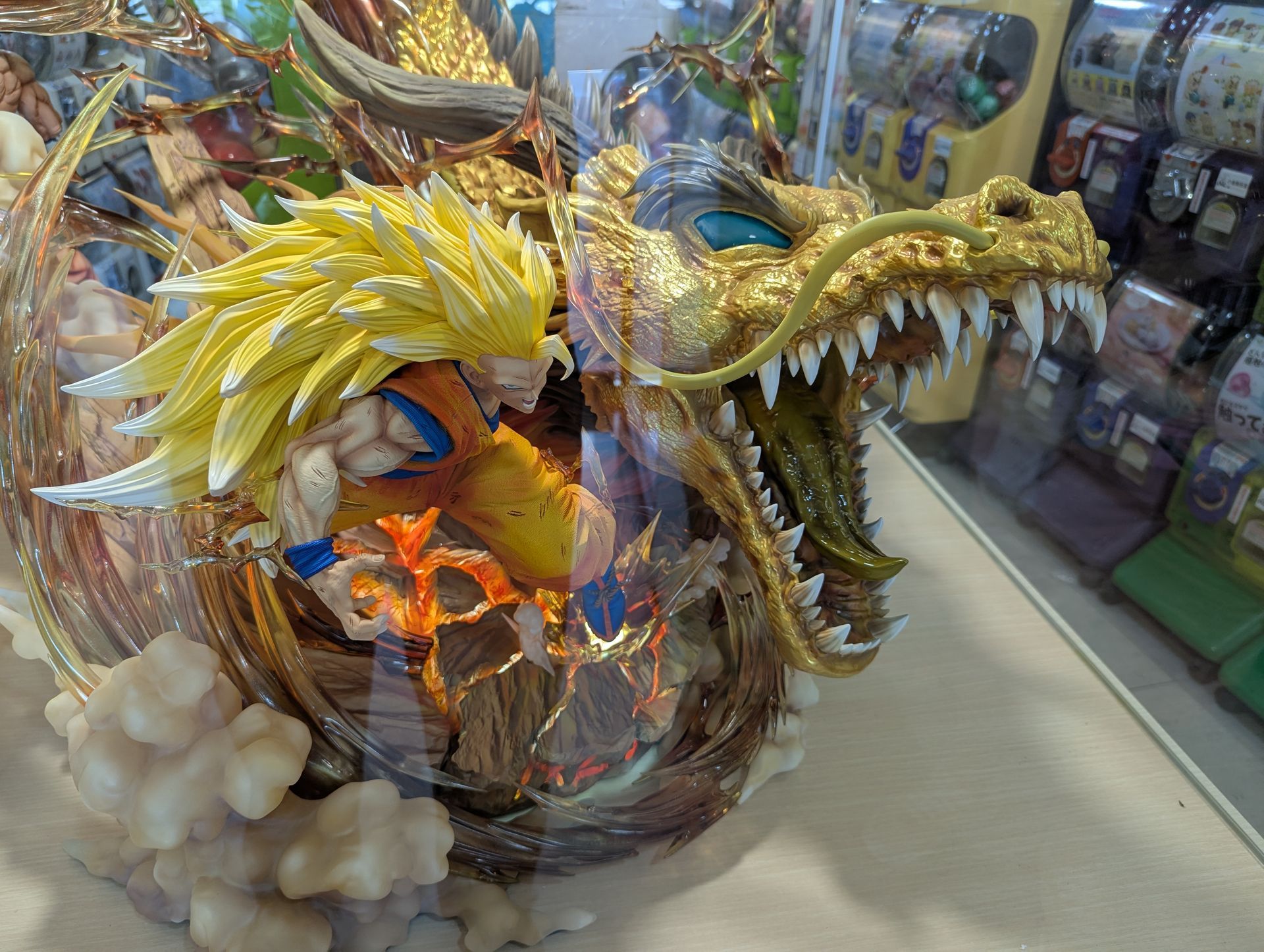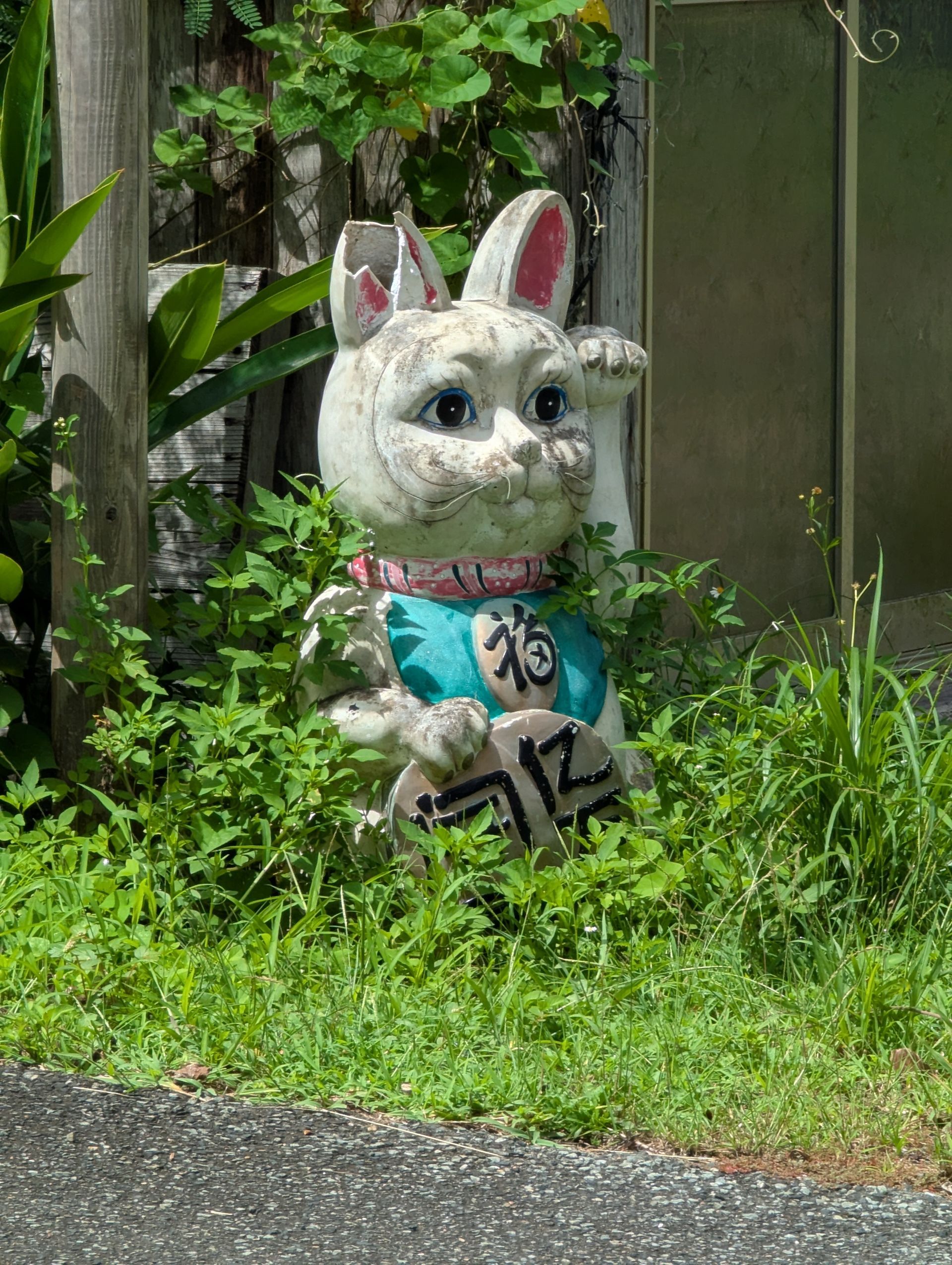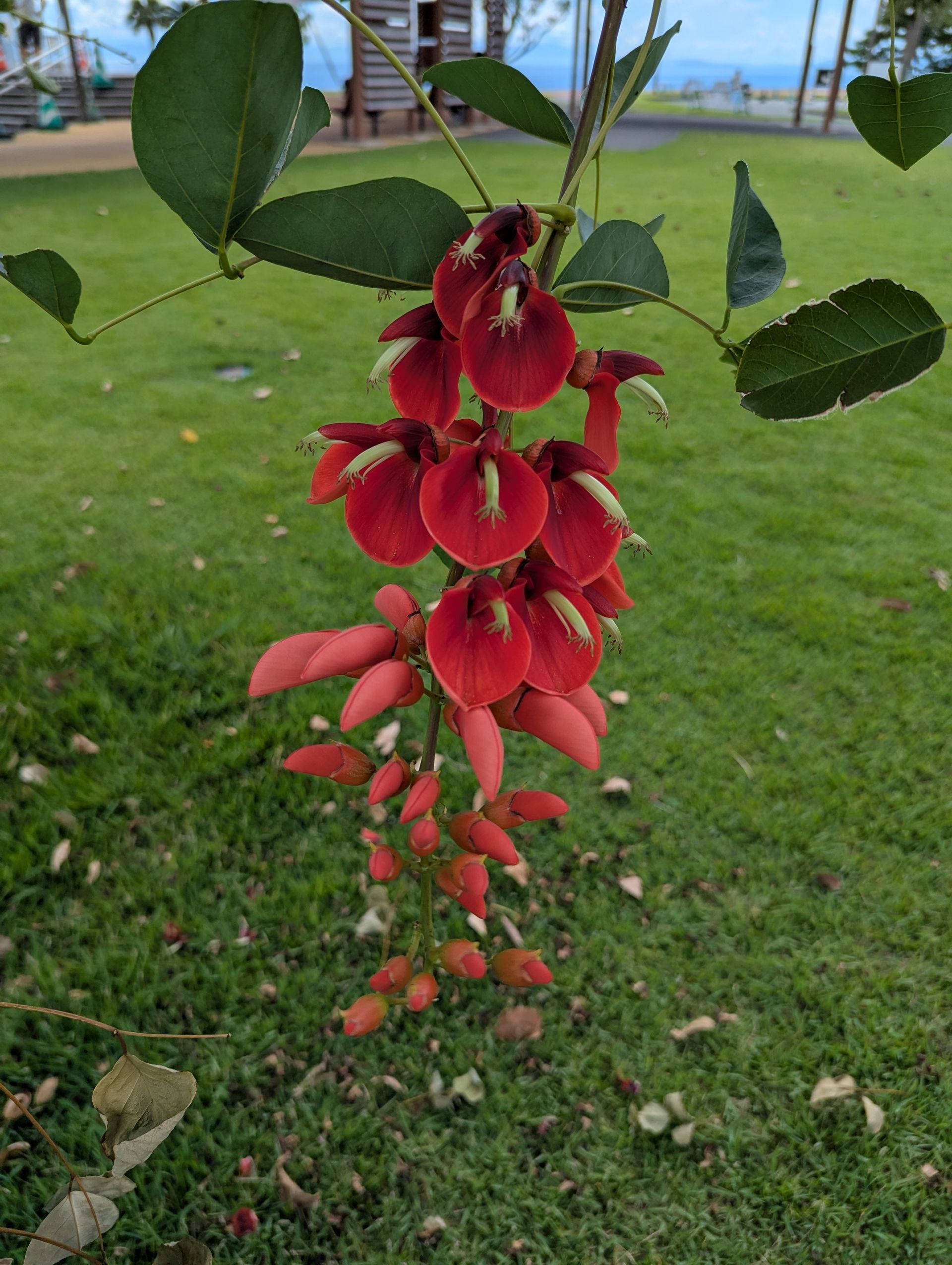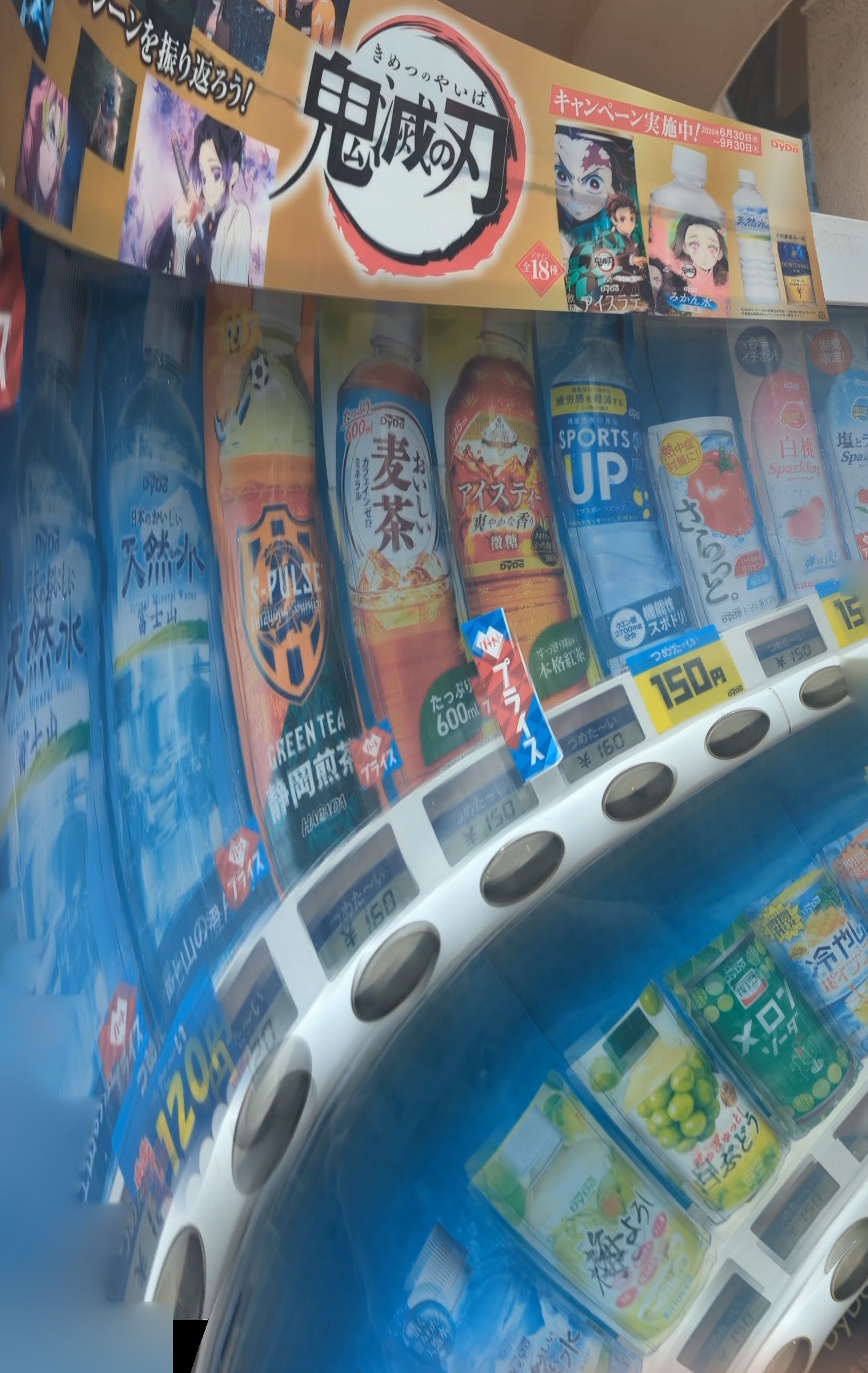Earthlings Letter #10 – The Earth’s Atmosphere
Greetings Earthlings!
I promised to talk more about our earth’s atmosphere in this letter. This is a huge subject and I will write only about one tiny bit of it so you might get interested and, I hope, want to find out more. I am like the Pied Piper leading you here and there to this and that. But you are the ones that choose. You will know what holds your attention and gets you curious.
Scientists have named 6 layers of our atmosphere; the Troposphere (starting on the ground and rising 5 to 9 miles up), the Stratosphere ( rising 31 miles from the top of the Troposphere), the Mesosphere (rising 53 miles from the top of the Stratosphere), the Thermosphere (rising 372 miles from the top of the Mesosphere), the Ionosphere (a band of electrons that is effected by the sun), and the Exosphere (6,200 miles from the top of the Thermosphere).
Enough similarities within and differences between these layers were found, so they needed to be named separately. Scientists section off large systems they are studying, into manageable chunks so that they can study them with out going nuts!
Here is how it works. Doing science can be like cleaning your room. You can get frustrated and confused by the complexity of the job. (depending on how messed up your room is…)
Scientists who try to find what is true about physical things around us can get just as frustrated by the task they face, because living presents us with endless things to try to understand. A big system has to be broken down into manageable bits. It is easier to concentrate on cleaning up one part of the mess ( like putting all the toys in a box) at a time.
This is why scientists specialize. They choose some part of a larger subject like, orange moths with black spots, out of a study of all the billions of insects in the World.
There are good things and not so good things about doing science in this way. At lot can be learned in great detail about a particular animal or plant or rock… but by concentrating so narrowly the larger picture of how this item of interest effects it’s environment and other creatures around, can be lost. And this is something we don’t want to loose sight of! A good scientist will try to keep seeing with “wide eyes”. They will not loose the larger picture in the details. I am sure you have heard the saying “You can’t see the forest for the trees.”
A writer named John Steinbeck once wrote this about the practice of scientific research, “ …we were determined not to let a passion for unassailable little truths draw in the horizons and crowd the sky down on us.”
A research scientist studies one part of a large natural system in great detail then moves on to the next part to study. Then she or he looks to see how the parts or layers interact with each other and finally thinks of an hypothesis. An hypothesis is defined as “ an explanation based on limited evidence” or “a starting point for further investigation”. This word comes from the Greek word, hupothesis , meaning ‘foundation’. The beginning of the word, hupo , means ‘under’ and the end of the word, thesis, means ‘placing’. This is roughly how we try to understand our physical reality. We recognize that we don’t have all the information but we make up an explanation from what we know. There is always more to discover and learn about physical things. This may not be the best way or the only way to find things out but it has taught us a lot of stuff, so far. Some of the things we have learned may in the future be found wrong. But a curious person (which is what a scientist is and what you are) does not mind being wrong because that opens up other things to be curious about and this is where the fun lies!
What is physical? What do we mean when we talk about physical things? Physical things are those things that we experience through our senses – hearing, sight, touch, taste and smell. When someone is talking about a physical thing they use words like; solid, real, actual, visible, sour, smoky, loud, bright, soft… I’m sure you can make a list of many more words that describe physical things. The original word in Latin, physica , means ‘things relating to nature’. And we know that nature is all around us and is our environment on Earth and that it is very physical!
I bet you thought we would never get back to our Earths atmosphere! We’re back. Atmosphere is one of Earths very large natural systems. Other large ones would be the oceans and waterways, the rocks and soil (which we thought about in the first EL), and the gravitational system. But let’s not get too many things out of our box of natural wonders. We don’t want to get overwhelmed! Or go nuts! The first layer of the thin envelope that surrounds Earth that we call atmosphere is the Troposphere, the layer that makes all our weather and rises from the ground up about 5 to 9 miles. This is the one with all the clouds. We can see it above us and stand under it where ever we live on Earth.
Clouds appear to us in different forms. Some names of their formations are; Cumulus, Stratus, and Cirrus.
These formations develop when certain kinds of temperature, moisture, altitude (the hight of an object in relation to the ground) and wind speed are present. If there is a lot of moisture in the air and the temperature rather warm then Cumulus clouds will start to form. The word Cumulus means, in Latin, to pile or accumulate. Cumulous clouds are clouds that ‘pile up’ on one another. You have seen them, they are white cottony mounds that become grey when they are about to rain on us. When cumulus clouds are white and puffy, rain is not going to happen right away. When they become grey then it will rain soon. A grey cloud is saturated (holding as much water as it possible can) the drops inside it are heavy and ready to fall. But why does the cumulus cloud turn grey? A cumulus cloud grows thicker and denser as it gathers fat water droplets. The thicker and denser it gets, less light is able to pass through it. It is no longer bright white and slightly see through. A cloud is grey or black because it is so dense that no light gets through. Try to think of it this way… you are seeing the ‘shadow’ of the cloud. Just like your body blocks light and you cast a shadow on your ‘dark side’.
How do rain drops form? The suns heat causes evaporation (when liquid changes to gas) of moisture from the ground and the heated/moist air rises (because warmth rises) carrying the water vapor upward to meet the cooler air higher up (cold air waits up high and presses downward). Tiny particles like dust, smoke and salt are also carried upward by the warm moist air and wind currents. These particles are important for the formation of raindrops. Moisture is drawn to a tiny particle and wraps itself around it, sticking to it and forming a drop of water. This is called condensation (warm/moist vapor that collects on the cool surface of a particle and becomes liquid). Drops of water are drawn to each other. Water is sticky! The larger ones “eat’ the smaller ones. When enough of them gather you see them as a cloud. Finally they get so heavy that gravity (the force that attracts any physical thing to the Earth) drags on them and they rain down onto the ground.
Suddenly you see two drops join together to make a fatter drop. If you watch closely you will see that larger drops draw in the smaller drops. Cohesion ( this means that water molecules are attracted each other) draws these drops together and they coalesce (come together and form one mass), then run away off the window!
Water molecules are attracted to each other and create surface tension. They draw so tightly toward each other that they can form the strongest and most efficient form in nature, a sphere. You can do a simple experiment and see surface tension. Fill a glass to the very rim with water then carefully add drop by drop of water to that same glass. You will find that you are able to fill the glass above the rim of the glass! The water will form a domelike shape above the rim.
You are seeing the cohesion between the water molecules, the attraction between them that pulls and creates tension on the surface Try carefully placing a fine sewing needle on the water dome you created. If you do it very gently and place it without breaking the surface, it will float! Also, you have probably noticed when you visit a pond that there are water beetles and spiders and skimmers that ‘walk’ on the surface of the pond.
They are moving about on the surface tension created by the strong attraction of water molecules to each other. How is this similar to the action of gravity? Is it similar? Do we know yet? Something to think about…
Water, what is it? Why does it flow? Why does it take on the shape of any container you pour it into? Water is very interesting stuff. It seems magical compared to solid things and gasses. Water and other liquids are a transitional form between solids and gases and let us actually see changes that turn one physical thing into another.
I was watching a river flowing the other day and suddenly I realized I was actually watching Earth going about it’s ‘business’. In front of my eyes it was operating like a magnificent machine that can rejuvenate and reinvent itself. A machine that lives and supports life. Our Earth doing its work.
